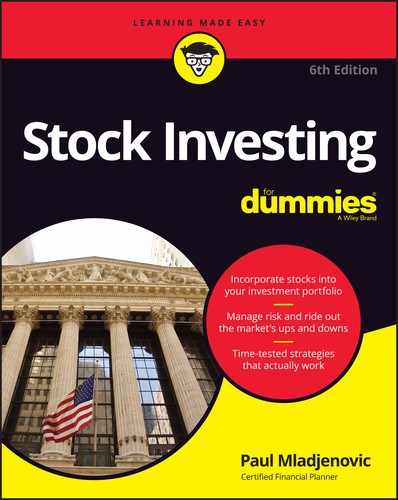Book Description
New ideas, strategies and resources to help you prosper in both up and down markets
This new edition of Stock Investing for Dummies gives you proven strategies for selecting the stock of solid, winning companies and help you build your portfolio for either growth, cashflow (dividends) or both. Long-term stock investing has been a reliable and foundational part of most wealth-building plans for over a century and you can benefit from profitable, actionable tactics, tips and successful strategies in this edition.
You will be able to navigate confidently through the post-pandemic period and through the market's rollercoaster ride and end up more prosperous than most stock investors. You'll also learn which types of stocks are best in a recession or stagnant economy.
With the help of this guide, you'll quickly learn how to profit despite the turbulence and uncertainty with plain-English tips and information on both stocks and ETFs, new tax rules, exchanges, and investment vehicles, as well as the latest guidance on the global market landscape.
Find out...
- The best approaches for investing in stocks (chapter 3)
- How to successfully invest in stocks with less than $100 (chapter 19)
- How to make your stock portfolio a "cash flow machine" for retirement (chapter 9)
- Learn how to minimize losses and maximize gains (chapter 17)
- The 10 features of a great stock to buy for long-term success (chapter 22)
- 10 ways to successful invest when the market is down (chapter 23)
- See the "right numbers" inside the company for safer stock choices (chapter 11)
- Need more income? Find out how to choose solid dividend-paying stocks (chapter 9)
- Explore new investment opportunities (chapter 13)
- Don't just make gains & income…learn how to keep more after taxes (chapter 21)
Stock Investing for Dummies is an essential guide for anyone looking for trusted, comprehensive guidance to ensure their stock investments keep growing.
Table of Contents
- Cover
- Introduction
- Part 1: The Essentials of Stock Investing
- Part 2: Before You Start Buying
- Part 3: Picking Winners
- Part 4: Investment Strategies and Tactics
- Chapter 16: Discovering Screening Tools
- Chapter 17: Understanding Brokerage Orders and Trading Techniques
- Chapter 18: International Stock Investing Opportunities
- Chapter 19: Getting a Handle on DPPs, DRPs, and DCA … PDQ
- Chapter 20: Corporate and Government Skullduggery: Looking at Insider Activity
- Chapter 21: Keeping More of Your Money from the Taxman
- Part 5: The Part of Tens
- Chapter 22: Ten Indicators of a Great Stock
- The Company Has Rising Profits
- The Company Has Rising Sales
- The Company Has Low Liabilities
- The Stock Is at a Bargain Price
- Dividends Are Growing
- The Market Is Growing
- The Company Is in a Field with a High Barrier to Entry
- The Company Has a Low Political Profile
- The Stock Is Optionable
- The Stock Is Benefiting from Favorable Megatrends
- Chapter 23: Ten Ways to Profit in a Bear Market
- Chapter 24: Ten Investments and Strategies That Go Great with Stocks
- Chapter 25: Ten Investing Pitfalls and Challenges for 2020–2030
- Chapter 22: Ten Indicators of a Great Stock
- Part 6: Appendixes
- Appendix A: Resources for Stock Investors
- Financial Planning Sources
- The Language of Investing
- Textual Investment Resources
- Investing Websites
- Investor Associations and Organizations
- Stock Exchanges
- Finding Brokers
- Fee-Based Investment Sources
- Exchange-Traded Funds
- Dividend Reinvestment Plans
- Sources for Analysis
- Tax Benefits and Obligations
- Fraud
- Appendix B: Financial Ratios
- Appendix A: Resources for Stock Investors
- Index
- About the Author
- Advertisement Page
- Connect with Dummies
- End User License Agreement
